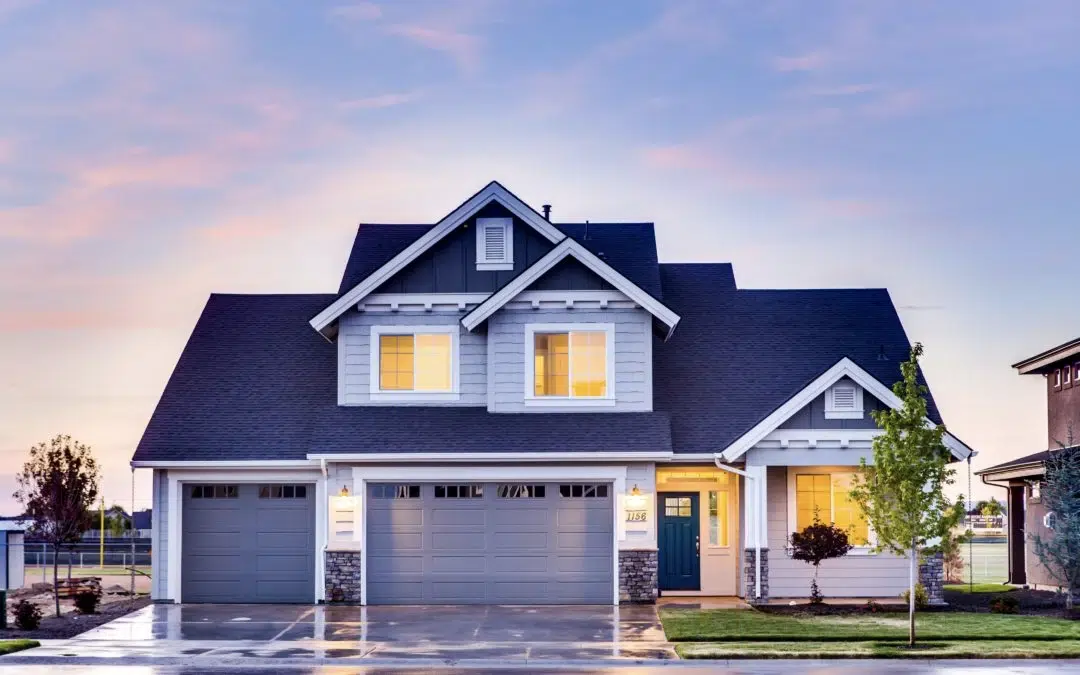Our 12 Best Tips To Choose Exterior Paint Colors
Did you know that the right exterior paint color can potentially net you thousands of dollars more when you sell your home? Needless to say, with so many different paint colors and options available, it can be overwhelming to decide on a few specific colors. Below, you’ll get some insider tips on how to select the best exterior house colors for your home’s exterior. Use these tips to give yourself the confidence to choose great exterior paint for your home, without second-guessing your choice.
1 – Identify Your Home’s Style and Neighborhood
Although you need not be hidebound by tradition, a home’s style does lend some guidance when you’re choosing exterior paint colors. An exuberant collection of pastels may not be the best fit for a ranch-style home, while very bold hues may feel out of place on a Victorian. That’s advice used by Maria Killam, a color expert, design blogger, author, decorator, and stylist—especially when she’s working on those classic home designs. “I love the symmetrical look of a Colonial with shutters,” she says. “White with black shutters and a green front door is what I would do if I had one.”
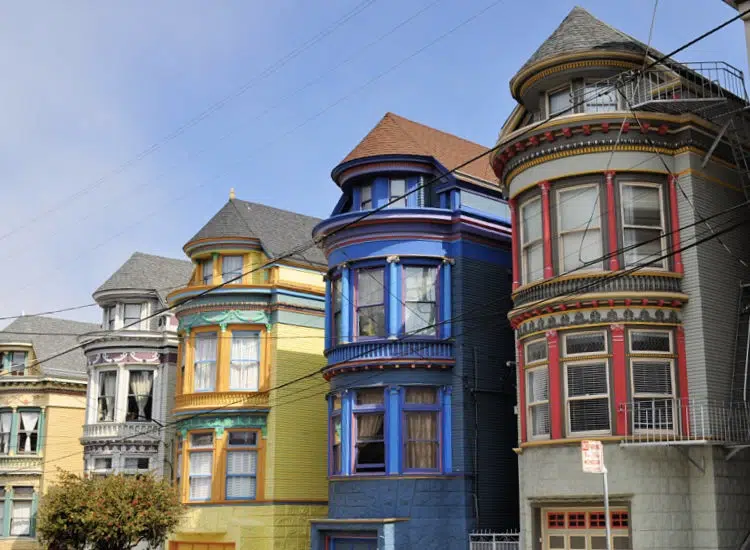
As much as your home provides inspiration, your neighborhood may also offer revelations concerning possible paint colors. Do you live in an area of historic homes, or a newer suburb with some dominant themes? Use those to give you a starting point.
As you’re trying to narrow down your color possibilities, drive around neighborhoods and snap photos of exterior color palettes that you like, or homes that look like yours. If something looks out of place, there’s a reason for it. “One of the biggest mistakes I see every day is with vinyl windows,” Killam says. “The standard colors are generally bright white and beige. White belongs with crisper, cleaner color schemes, like turquoise or a straw yellow, for example, or grays and blacks.”
Want to score points with potential home buyers and your neighbors? Consider choosing colors that will complement the curb appeal of the entire neighborhood. If your neighborhood has an HOA, check to ensure you’re within your communities’ guidelines for approved exterior paint colors. You may have to consult with your local community board before making a final decision on color. Consider choosing colors that set your house apart, but that don’t clash or compete with neighboring homes. To maintain neighborhood appeal, choose colors that compliment, but don’t mirror your neighbors’ homes. Similar colors are okay, but choosing colors that are exactly the same can detract from the uniqueness of your home.
2 – Observe Different Light
As mentioned, sunlight can play a large role in the exterior paint color you choose. How will the colors you choose look in direct sunlight versus a cloudy day? If it looks great under one condition but not the other, you may want to start looking at some other color options that appear more consistent under different conditions. You should also consider which direction the front of your home faces. If your home is more north-facing, it won’t get as much direct light throughout the day—making the color appear cooler. If your home is south-facing, your colors will look a lot warmer—making them feel less intense and more muted.
3 – Examine Your Interiors
While scoping out the neighborhood can be helpful, you’ll also want to evaluate your interiors. “Look to the inside of your home to see what would go with the exterior paint choice,” Hayslett says. “It’s nice to have a cohesive feel with the interior when it comes to an exterior color.” After all, your exterior paint color is what makes a first impression! “It helps set the narrative,” Hayslett states. For example, she adds, “If you have dark greens throughout your house then considering something in that family will make your exterior really feel homier.”
Plus, in some cases, you may be able to see your exterior paint from indoor rooms, and you won’t want the overall result to clash. “In my home, the porch ceiling and columns are visible from my living room, so I made sure to select colors that looked great from that vantage point as well,” says Bethany Adams of Bethany Adams Interiors. “Your inside and outside needn’t match, just pay attention to bold color choices and make sure you can literally live with them if need be.”
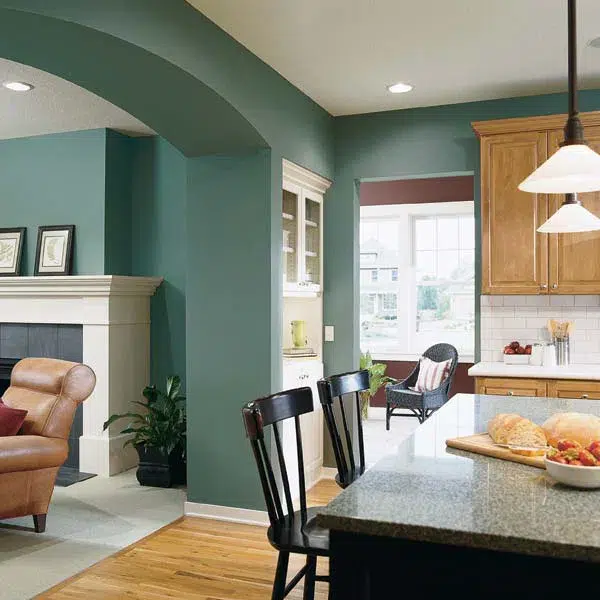
Your decorating style may also play a role in shaping what exterior paint color is best suited to your home. If your style is traditional, Tracy Morris of Tracy Morris Design suggests going for warm neutrals alongside a deep green, black, or navy door and shutters. Transitional decorators may wish to opt for cool neutrals paired with charcoal or purple-based black doors and shutters, and contemporary enthusiasts will want to keep neutral tones in heavy rotation outside, Morris adds.
4 – Remember Trim
To trim or not to trim? Well…that shouldn’t even be a question! Painting the trim around your home should be a part of every exterior paint job. Not only can painting the trim and accent protect the wood fascia around your home from weather and potential rot, it also provides a much-needed color contrast to your homes’ exterior. If you want to create a subtler contrast, try choosing an exterior trim color that’s a few shades lighter or darker than the exterior color. Selecting a trim color in the same color category as your main color helps highlight your home without creating a drastic color contrast. If you prefer to make a bolder statement with your trim, choose a color that is more of a contrast from the main exterior color. Either way, don’t overlook the importance of selecting a good trim color to compliment the rest of your new house look.
5 – Consider Deck and Fence Color
Curb appeal doesn’t end at the curb. The color of your deck and fence (if you have one) should also coordinate with the exterior paint color you choose. Although some homeowners tend to overlook this detail, the good news is you have a lot of flexibility and options when it comes to deck and fence colors. Depending on the type of material used to build your deck or fence you can choose either a paint or stain. Both choices offer a wide variety of color options. Even concrete decks can be painted or stained.
One thing to consider when deciding which color paint or stain to use on your fence and/or deck is the age and material it’s made of. Older decks or fences made of wood may require a primer coat prior to painting to reduce the amount of paint absorbed by the wood. It’s also a good idea to use the same color test method you applied on the exterior of your house and trim on your deck and/or fence too.
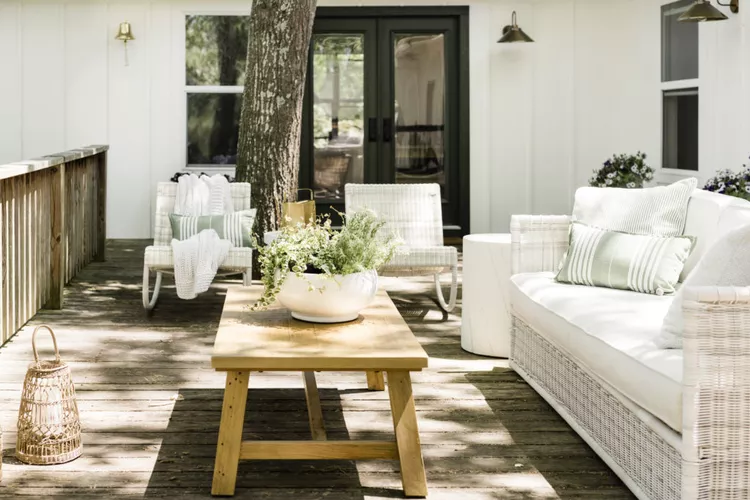
6 – What About Your Garage?
Another section of your home that might get overlooked when choosing exterior paint colors is the garage. Do you want your garage door to be the same color as the rest of your house, or do you prefer a contracting color that really makes them stand out? There’s no wrong or right answer. It really comes down to a matter of preference. However, just like with a deck or fence, take into consideration the condition and type of material that will be painted. Vinyl, wood, or metal garage doors will require different types of prep work to properly prepare the material for painting. Wood doors may have to be scraped and primed prior to painting, where vinyl or metal doors may only require a good cleaning. Either way, making sure the surface is properly prepared will ensure whatever color you choose will last a long time.
Get An Estimate To Paint Your Home
Ready To Make A Change?
Schedule a virtual estimate with the painters near you and get your personalized estimate today!
7 – Do You Have a Shed?
If you have a shed, it’s tempting to just slap on any color paint and call it a day. But your shed is a part of your property and it should complement the rest of your home. Before choosing a type and color, it’s important to know there are different paint options for different types of shed material. For example, a metal shed will look and hold paint better if a rust-inhibiting primer is used prior to painting. After the primer, using a 100 percent latex paint can help protect your shed from the elements and make it look like new. For sheds made using wood siding, a waterproof primer prior to painting can help preserve the wood and keep it from rotting prematurely, which can help it last a little longer.
8 – Don’t Get Caught Up in Trends
Clothing, shoes, sofas, home colors—they’re all subject to the same passing trends. “Just like most people aren’t interested in painting their houses brown right now, because that trend is over, don’t do the same thing with charcoal,” Killam says. “You might love it now, but as soon as the gray trend is over, you’ll wish it was the next trendy neutral.”
9 – Look to Your Home for Guidance
Your home likely already has some hues that you should include in your color scheme: brick or stone on the foundation, window trims, even the roof. Those should serve as a base to build on. “A lot of people don’t understand how much influence existing fixed colors have when selecting paint colors,” Killam says. “You can’t ignore what’s already on the house and go for a current trendy color that in no way relates to what’s already there. One of my clients painted stucco gray with her gold/yellow stone, and she contacted me for a consultation. She was not thrilled, and the color I gave her coordinated much better with her existing stone and she was very happy with the result.”
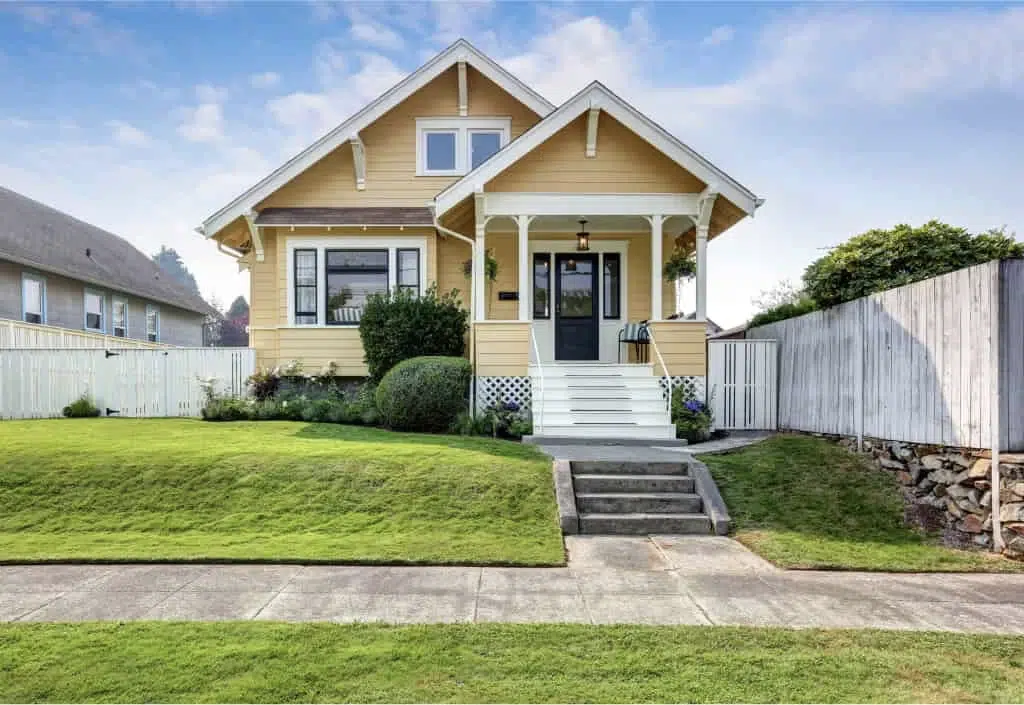
In addition, a home’s size influences the way colors look. Residences that are very large and painted a dark color may look ominous and foreboding, while too light schemes on a small house may result in a home that doesn’t feel grounded.
Landscape also plays a part. A more naturalistic landscape may inspire colors that are recessive, such as sea foam green, pastels, or soft neutrals. A formal landscape setup—rows and rows of boxwood shrubs lining a walkway—may dictate stronger colors and accents with a definite design rigor.
10 – Rely on Exterior Paint Color Wheel Rules
Many successful home color combinations use three hues—a dominant shade and two accents, including one that’s often richer or brighter than the others. When in doubt, rely on tried and true color guidelines from the color wheel. Hues in the same family—varying shades of gray, for example—work well and are called monochromatic. Those hues next to each other (analogous) work well together, as do opposites, also called complementary colors. “If you have an earthy color scheme, with muted colors like browns and creams, make sure you choose the beige vinyl window,” Killam says. “And coordinate your trim color to go with it. A house with earthy stone combined with bright white vinyl windows will always look wrong.”
11 – Use Actual Paint Samples (Not Printed Ones)
Printed paint samples are great for providing a general idea of what the paint color may look like once it’s dried. However, looks can be deceiving. Especially when printed paint swatches are viewed indoors, under artificial lights. When choosing your exterior paint colors, it’s best to use real paint samples instead of relying on a printed version. Plus, you never know how a particular paint will look over different base materials. For example, painting a wood surface versus painting exterior brick or stucco could alter how the color appears.
There are certain types of wood and other materials that absorb paint in ways that can drastically change its appearance once it dries. You should also keep in mind how much exposure to direct sunlight can change the appearance of an exterior paint color. Over time, extended exposure to the sun will make the color appear much lighter. If your home receives a lot of direct sunlight throughout the day, it’s better to select a color that’s a shade or two darker than your original choice.
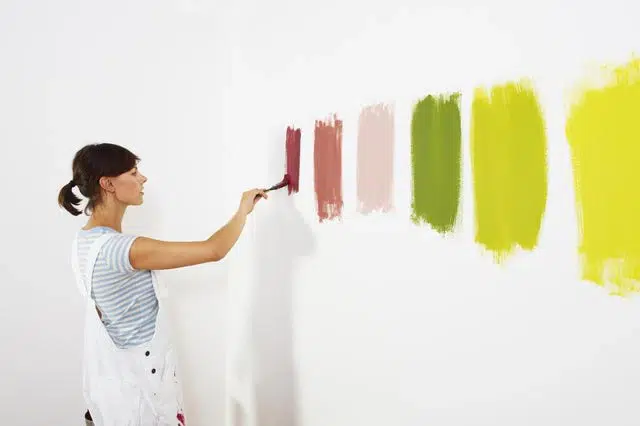
The best way to tell how a color will look on the exterior of your home is to purchase a small test size of the paint colors you’re considering. Use your test paint on a small area of your home’s exterior (choose an area that’s not highly visible). Swatch paint on both the north and south sides of your house. Always paint in the areas where the lighting and conditions can vary. Remember to place your paint sample next to your desired trim color to get an idea of how they may look side by side. And finally, if you truly want to get the best idea of what your home will look like in all conditions, once it has dried, check your paint samples at different times of the day.
Whatever You Choose: Test, Test, Test!
Once you’ve narrowed down your possible exterior home colors to several choices, get color samples and paint them in large swaths. View them at different times of the day, in sun and in shadow. If you still can’t decide, “Hire a designer you trust or get a friend to look at your house with you,” Killam says. “We get used to the way our own house looks and don’t notice the things that an outside observer would.”
Creating a mockup that showcases your exterior paint before it is applied is also essential, says Lauren Sullivan of Well x Design. “Seeing everything together first in a small section makes it much easier to visualize and make adjustments—rather than after you’ve had your entire home painted in a color that doesn’t quite work,” she explains. Still, renderings are not the end all be all—swatches are still essential. Sullivan notes, “In the end nothing replaces seeing an exterior paint option in real life in the space where it will live.”
12 – Get Professional Advice
Given all the available color options, choosing a good exterior paint color for your home can get a little overwhelming. Choosing the wrong color for the exterior of your home can be a costly mistake that leads to wasted time and unnecessary headaches. But if you follow these tips, you’ll be able to make a more informed decision about how to choose a color that’s perfect for your home. If you’re still not sure, or you need some suggestions, our pros can help. We’re experts when it comes to choosing just the right paint color for your home, garage, deck, fence, shed, or anything else you need painted. If you want to take the stress and worry out of deciding what exterior paint color is best for your home, call Vista Painters today!
Get An Estimate To Paint Your Home
Ready To Make A Change?
Schedule a virtual estimate with the painters near you and get your personalized estimate today!

